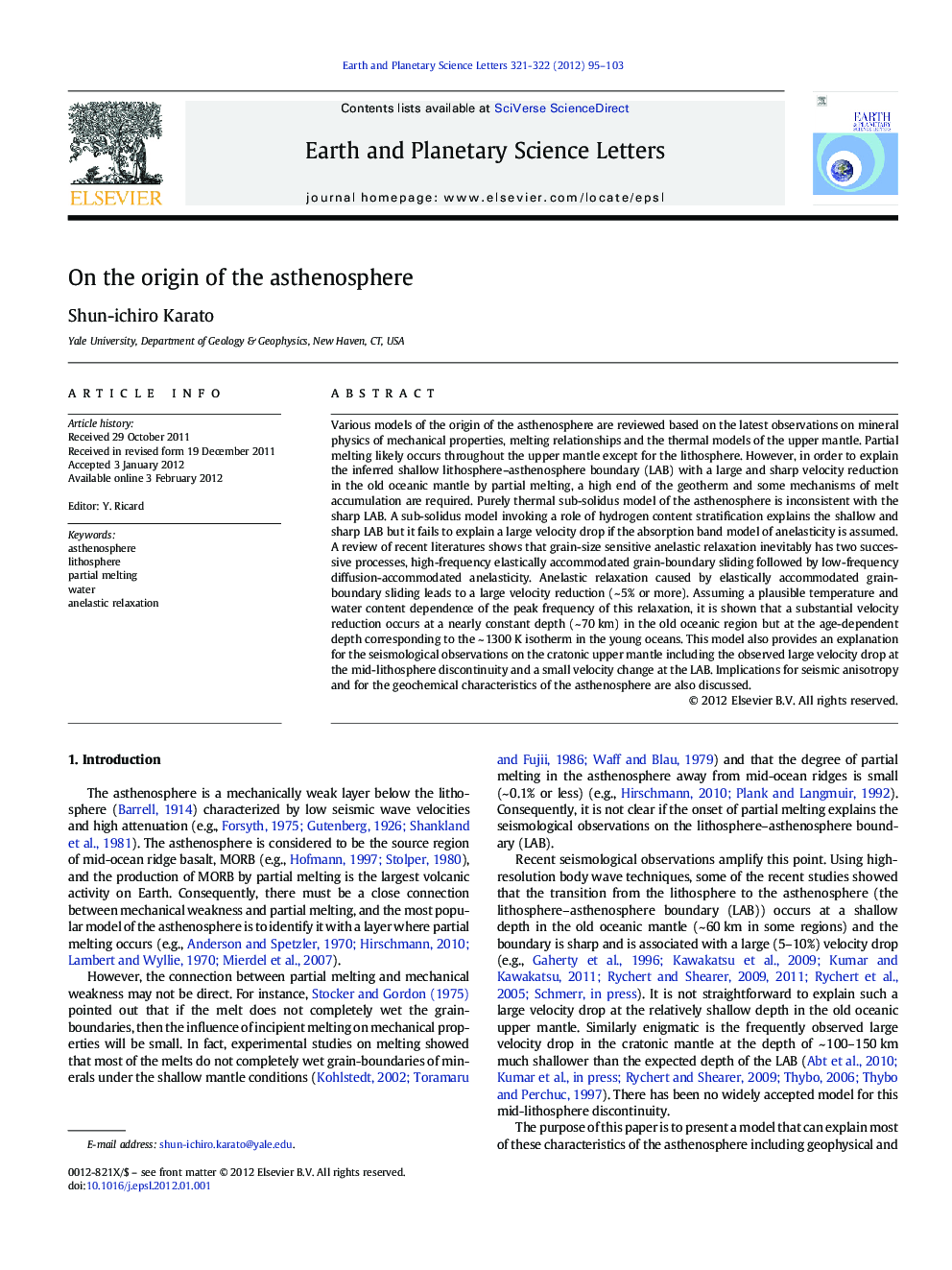| کد مقاله | کد نشریه | سال انتشار | مقاله انگلیسی | نسخه تمام متن |
|---|---|---|---|---|
| 4677588 | 1634810 | 2012 | 9 صفحه PDF | دانلود رایگان |

Various models of the origin of the asthenosphere are reviewed based on the latest observations on mineral physics of mechanical properties, melting relationships and the thermal models of the upper mantle. Partial melting likely occurs throughout the upper mantle except for the lithosphere. However, in order to explain the inferred shallow lithosphere–asthenosphere boundary (LAB) with a large and sharp velocity reduction in the old oceanic mantle by partial melting, a high end of the geotherm and some mechanisms of melt accumulation are required. Purely thermal sub-solidus model of the asthenosphere is inconsistent with the sharp LAB. A sub-solidus model invoking a role of hydrogen content stratification explains the shallow and sharp LAB but it fails to explain a large velocity drop if the absorption band model of anelasticity is assumed. A review of recent literatures shows that grain-size sensitive anelastic relaxation inevitably has two successive processes, high-frequency elastically accommodated grain-boundary sliding followed by low-frequency diffusion-accommodated anelasticity. Anelastic relaxation caused by elastically accommodated grain-boundary sliding leads to a large velocity reduction (~ 5% or more). Assuming a plausible temperature and water content dependence of the peak frequency of this relaxation, it is shown that a substantial velocity reduction occurs at a nearly constant depth (~ 70 km) in the old oceanic region but at the age-dependent depth corresponding to the ~ 1300 K isotherm in the young oceans. This model also provides an explanation for the seismological observations on the cratonic upper mantle including the observed large velocity drop at the mid-lithosphere discontinuity and a small velocity change at the LAB. Implications for seismic anisotropy and for the geochemical characteristics of the asthenosphere are also discussed.
► Partial melting does not cause the lithosphere–asthenosphere boundary (LAB).
► The grain-boundary sliding enhanced by water and high temperature causes the LAB.
► The continental mid-lithosphere discontinuity is due to grain-boundary sliding.
► The composition of the asthenosphere is controlled by partial melting at ~ 410-km.
Journal: Earth and Planetary Science Letters - Volumes 321–322, 1 March 2012, Pages 95–103